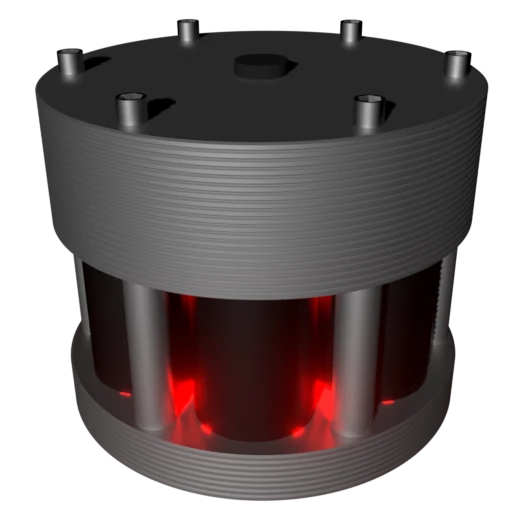 ICE
ICE ICE
ICEICE stands for Information Communication Entertainment and pretty-much covers all those functions in my life (and some other minor functions like low-voltage power routing and security-system). It is based around a fairly standard server-class computer core, running the Debian GNU/Linux OSS operating system, though somewhat modified/customised in both software and hardware. Physically, it is rather large - it can't actually be safely moved without dis-assembly (and the requisite knowledge of how to safely dis-assemble it). The individual parts don't count for anything particularly special on their own (in fact a lot of them are less-than-new and a bit junky, being predominantly eWaste-rescue parts -- I tend to re-purpose old technology, rather than discard it), but I am quite personally satisfied with the combined result.
I am often exploring ways to integrate more of my life into the ICE unit, generally by digitally storing it in the systems (even physical possessions often can be -- and have been -- re-created in the ICE's virtual reality engine).
Part of the bulk of my ICE is also sculptural -- I have a liking for sci-fi-looking junk machine parts, which tend to get welded/bolted/glued to the chassis over time.
I am (very sloooooowly) in the process of redesigning my ICE unit into a small, silent block of processing. My intention is to use a stack of stainless-steel disks with cavities machined out for components, enabling heat to be transferred out via conduction (some internal copper passive heat-channels may also be involved) without noisy whirring fans. My present design concept, while 'small', is certainly not intended to be portable, weighing in at an estimated 40kg+! It is intended to just sit silently in the corner doing its thing 24/7.
I calculated I can vacate about 30W of heat per plate-edge into ambient air, so with two plates encapsulating the server components, I have about a 60W power ceiling, but will be well within that range using low-ish TDP system-components: I don't have particularly high compute needs, so this shouldn't be an issue: my 2yo phone is more powerful than my current server setup!, so while a decent bump in capabilities will be welcome, it still won't need to be to a particularly powerful system to serve my limited needs. (Even for VR, the server itself can be quite limited - for the kinds of worlds I run, supporting no more than half-a-dozen visitors, even something in the range of a Raspbery Pi is adequate, though I can almost-certainly do far better anyway! The VR-client needs a good bit of graphical grunt, of course, but that is a separate hardware module to the server).
This design is about the dozenth iteration, if I count some of my early converted-domestic-gas-cylinder-filled-with-coolant-oil designs which I started as long ago as the late 1990's, so my liking for cylindrical cases pre-dates the MacPro 'Ash-tray' by a good 15 years and any resemblance is purely coincidental. The technology keeps getting smaller, so my designs keep having to shrink! From a materials-cost and -handling perspective this is good, though it has caused some aesthetic issues that had to be worked through. I am also hitting the limit for passive-thermal-management as surface area has shrunk to the limits of what can support heat-dissipation into air, even with lower-TDP chips.

Above is the current planed form for the next generation of the ICE processing core. Scale-wise, it is a little larger than one foot (335.6mm precisely) in both diameter and height. Actual implementation won't begin for a very very long time. At present I am specifying and pricing various components and making mock-ups from scrap chipboard and cardboard rolls, to be sure I am happy with the scale and ratios.
Not shown: I will be using the top surface to integrate, for display, a small selection of my favourite bits of sci-fi-looking tech-junk.
The metal plates have bevelled edges to give some interest to the sides as well as to hide the joins between each plate (actually, each plate also has 3 'false' bevels in addition to the edge ones, for aesthetic reasons). The slight increase in surface area will help heat dissipation also. Most of these 21mm plates are bolted together internally in pairs for each functional part, with the components sandwiched between in form-cut cavities. A bus-bar carries power and data up the stack of plates as needed.
The black cylinders are power cells to provide enough juice to carry through a brief power loss, or to properly hibernate state to storage and shut down cleanly, in the event of a longer power failure.
Power and network connections are under the base and USB and HDMI/DP+ connections on the top (where the black circle is in the above render).
Logically, the ICE-system will look something like this:
The Remote Smart Terminals are intended to be largely stateless devices, providing remote windows into the server, which handles the actual data processing and storage. Basically a local-cloud setup. The local terminal device is largely the same, but wired strait in on top of the server.
The actual human interface details (beyond the diagram) are more fluid as devices can change radically with time. For now it is a pretty generic Keyboard-Monitor-Trackball arrangement, with the addition of a 6-axis-controller for 3D control in immersive virtual environments. I would like to also add a VR-HMD but am still waiting for one that will actually integrate relatively-seamlessly with an open VR environment (technology as tools, not toys!).